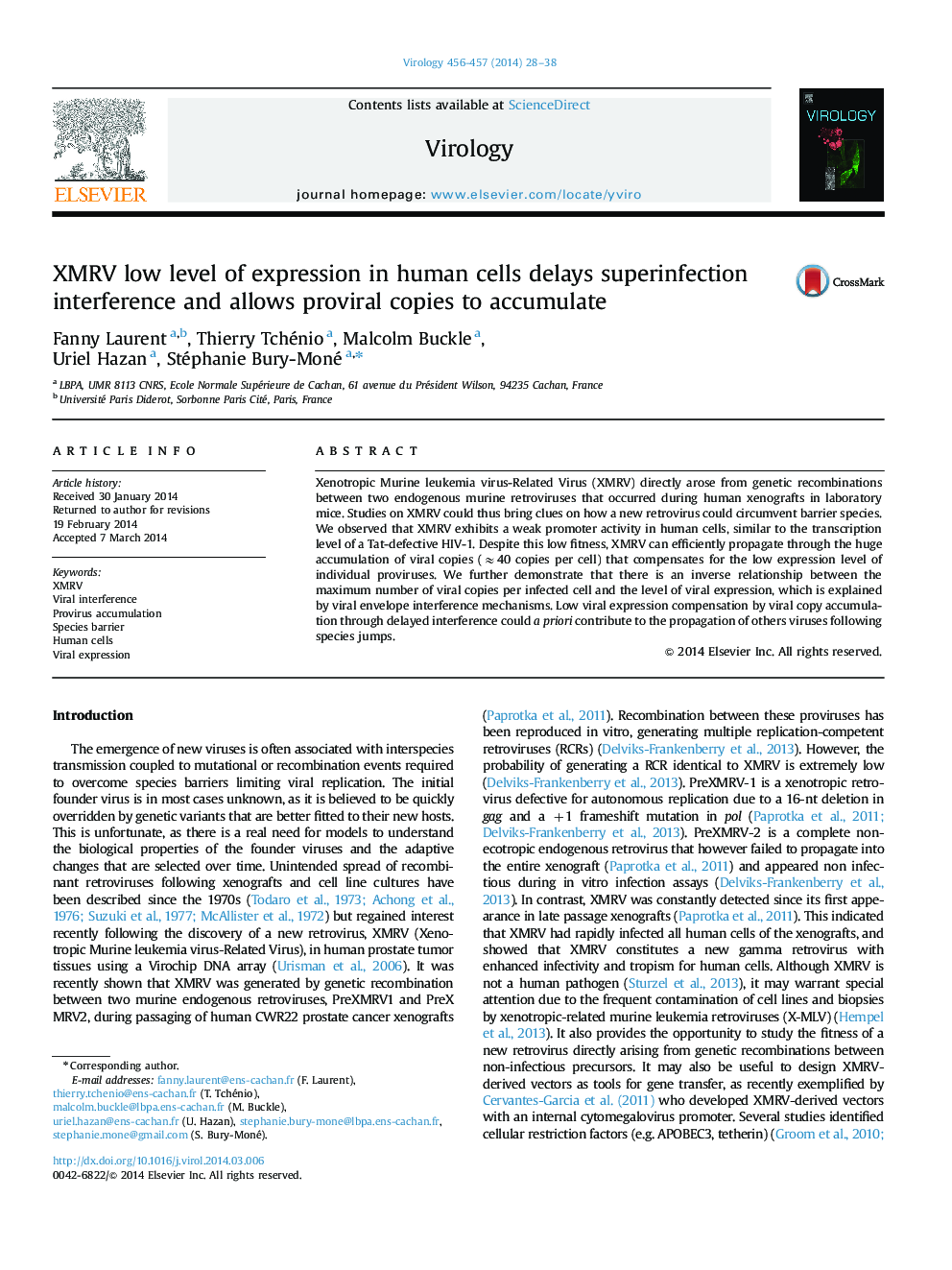| Article ID | Journal | Published Year | Pages | File Type |
|---|---|---|---|---|
| 6140141 | Virology | 2014 | 11 Pages |
Abstract
Xenotropic Murine leukemia virus-Related Virus (XMRV) directly arose from genetic recombinations between two endogenous murine retroviruses that occurred during human xenografts in laboratory mice. Studies on XMRV could thus bring clues on how a new retrovirus could circumvent barrier species. We observed that XMRV exhibits a weak promoter activity in human cells, similar to the transcription level of a Tat-defective HIV-1. Despite this low fitness, XMRV can efficiently propagate through the huge accumulation of viral copies (â40 copies per cell) that compensates for the low expression level of individual proviruses. We further demonstrate that there is an inverse relationship between the maximum number of viral copies per infected cell and the level of viral expression, which is explained by viral envelope interference mechanisms. Low viral expression compensation by viral copy accumulation through delayed interference could a priori contribute to the propagation of others viruses following species jumps.
Related Topics
Life Sciences
Immunology and Microbiology
Virology
Authors
Fanny Laurent, Thierry Tchénio, Malcolm Buckle, Uriel Hazan, Stéphanie Bury-Moné,
